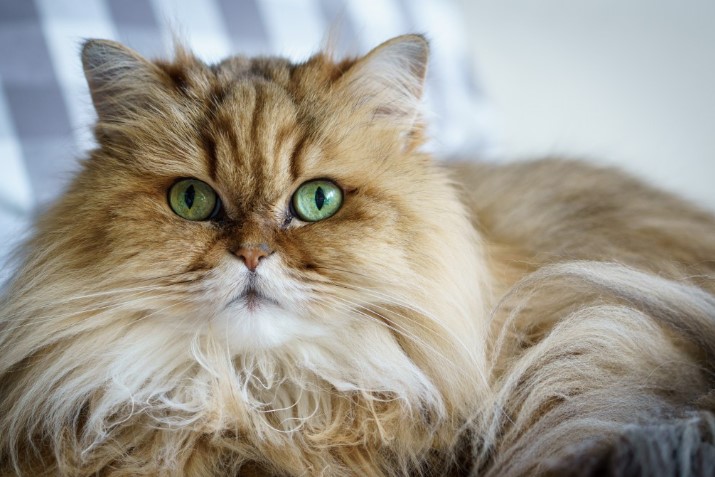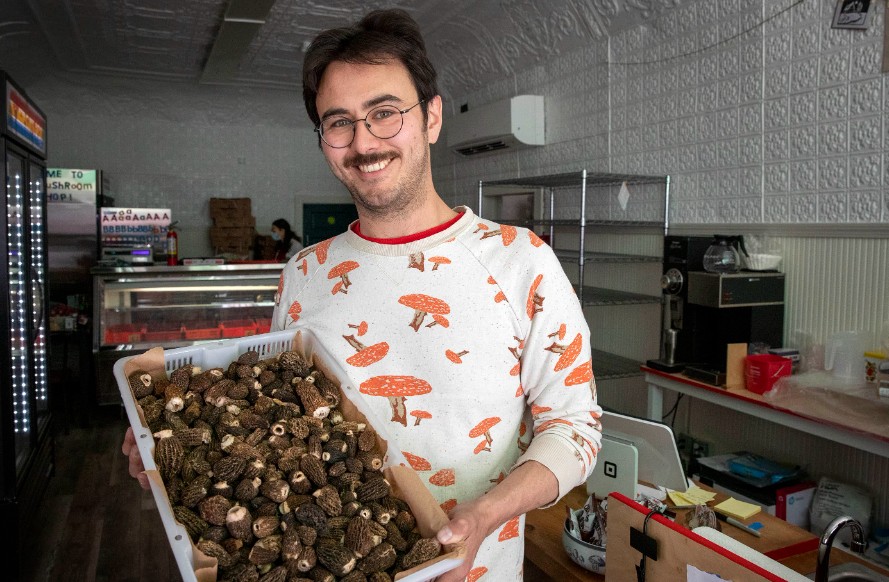Meet the world’s first (and only) cat and mouse armorer
“I always joke that when I made the first suit of mouse armor, in a millisecond I also became the greatest mouse armorer in the history of mankind,” says Jeff de Boer, a Canadian artist who has designed and crafted museum-quality armor for cats and mice for 36 years.
Over that time, de Boer estimates he’s created more than 500 suits of animal armor in his Calgary studio, ranging from rodent-size Crusader armor complete with tiny snout-nosed helmets and tail scales, to elaborate medieval Islamic chainmail large enough for your average house cat.
For de Boer, the purpose is not for four-legged creatures to actually wear his elaborate hand-made armaments, but rather to jolt people’s imagination and call forth the hero in underdogs.
“Each person brings their own story to my work,” de Boer explains. “I’m not the author of a story; I’m the maker of artifacts for a yet unrealized story.”
“It all started with a mouse”
De Boer’s inspiration began with a visit to the armor collection at Calgary’s Glenbow Museum when he was five years old. “I think that at a very early age children recognize armor as something interesting, and for me it was really haunting,” the 59-year-old artist recalls. “How was this made? Who wore it? Why did they wear it? What were the experiences that that armor had? Those thoughts and ideas have been with me my entire life.”
De Boer started tooling around in his father’s metal fabrication shop and made his first human-size suit of armor in high school. But as a jewelry major in art school in the mid-1980s, he had to somehow reconcile the small scale of the items he was creating with his passion for armor. He could craft armor for people at a miniature size, but that felt inauthentic. What sort of relatively tiny armor could he create that still felt like it had a real purpose?
“And then it dawned on me: I could make a suit of armor for a mouse,” he recalls. “That was the transitional moment—as Disney said, “It all started with a mouse.”
As his vision came into focus, de Boer realized he needed to introduce an antagonist into his world of armored mice. Naturally, it was cats.
De Boer also sees an analogy in the art world. To him, cats can represent the power of the world of fine art, where works can command millions of dollars, while mice represent the artisans who struggle to find patrons to fund their work and keep their craft alive.
Making history, not just “things”
The Armor for Cats and Mice series is just one of a number of works by de Boer—he also creates jewelry, large public sculptures, and even funeral urns—but the animal armor remains closest to his heart with its particular focus on history and archaeology.
Once de Boer determines the culture and timeframe for an armor project, he conducts extensive research on armament styles of the time, then draws the concept by hand. He then crafts clay models from the drawings, which help him draft exact patterns for each of some 30-200 separate metal elements that the armor may require. (A Roman gladiator mouse, for example, may be made of 50 different parts, while scaled cat armor may have 500.)
Since the artist works on a miniature scale, he creates his own tiny tools and rivets to fashion the armor elements. It can take 40 hours just to make the roughly 5 to 10 custom tools needed to create a particular style of mouse armor, then an additional 30-50 hours to create each mouse. Most are crafted from nickel, steel, and/or brass (and sometimes gold or platinum), and finished with flourishes like whiskers or tassels.
De Boer isn’t concerned that 3D printing will make his work obsolete; rather, he’s cheered by the number of artisans and collectors who follow his work on social media and are inspired to keep the metallurgy craft alive for future generations.
“We’re all part of making history,” he says. “We’re not just making things. We are part of something past, present, and future.”
Inspiration everywhere
Who exactly needs a suit of cat or mouse armor? De Boer says the collectors and other patrons who commission his work have a variety of backgrounds, but all share a deep interest in history and art. “Probably the one thing everybody has in common is they probably all subscribe to National Geographic,” he jokes.
The requests are always individual and very personal. In the case of cat armor, the request is often to memorialize a beloved pet who has passed away. De Boer incorporates the individual stories of the animals into this work, making the armor a sort of portrait or even reliquary of each one. He also occasionally creates armor for other species, like the samurai dog helmet commissioned by a police officer to capture the “warrior spirit” of his retired four-legged partner.
The patrons for his mouse armor find inspiration everywhere and sometimes ask for types of armor that have never been seen on human battlefields. De Boer is currently working on a commission from an Indian-Polish couple that combines elements of 17th-century armor from both the Indian Maratha Empire and the Polish Hussars. “Something I would never think to do,” he concedes, “but it’s exciting because you have these two cultures, and you are doing the research and you discover they’re both contemporary.”
De Boer stresses that his work is not intended to be worn by living animals, describing the first and last time he was asked to dress a cat in armor. It was for a Japanese game show in the early 1990s, and a television crew showed up at his studio with a “stunt cat” that was allegedly very comfortable wearing clothes on camera. “Let’s just say that we had a very large cat in a very small suit of armor,” he says. “Highly not recommended.”
Artisans and artifacts across the ages
When discussing his work, de Boer often brings up the experience he had coming face-to-face with Tutankhamun’s golden mask in the Cairo Museum. “The thing that came to my mind wasn’t the amazing object in front of me—which clearly it is. But my thoughts went to the day it was finished. Imagining the Egyptian artisans sitting in their workshop, having their friends over for a beer, celebrating this beautiful accomplishment and saying the same things that I would say: ‘I’m grateful I had a patron,’ and ‘Isn’t it amazing that 10 generations of skills have been developed so that we can produce something like this?'”
And just as archaeologists—and the world—marveled at Tut’s golden mask when it was discovered in 1922, de Boer wonders how people will react to his cat- and mouse armor centuries from now, whether it’s in a museum or discovered in the excavation of a 21st-century residence.
“Would they have the same reaction, ask the same questions?” he muses. “Why was it made? Is this real? Who made it, and why, and for whom?”
“Those are the same questions that have inspired me to become an artist,” he adds. “In a sense, it’s becoming part of a continuum of history through the work that the artisans of the past left behind—the artifacts that I discovered inspired me to do this. And I hope that my work will do the same for future generations.”







